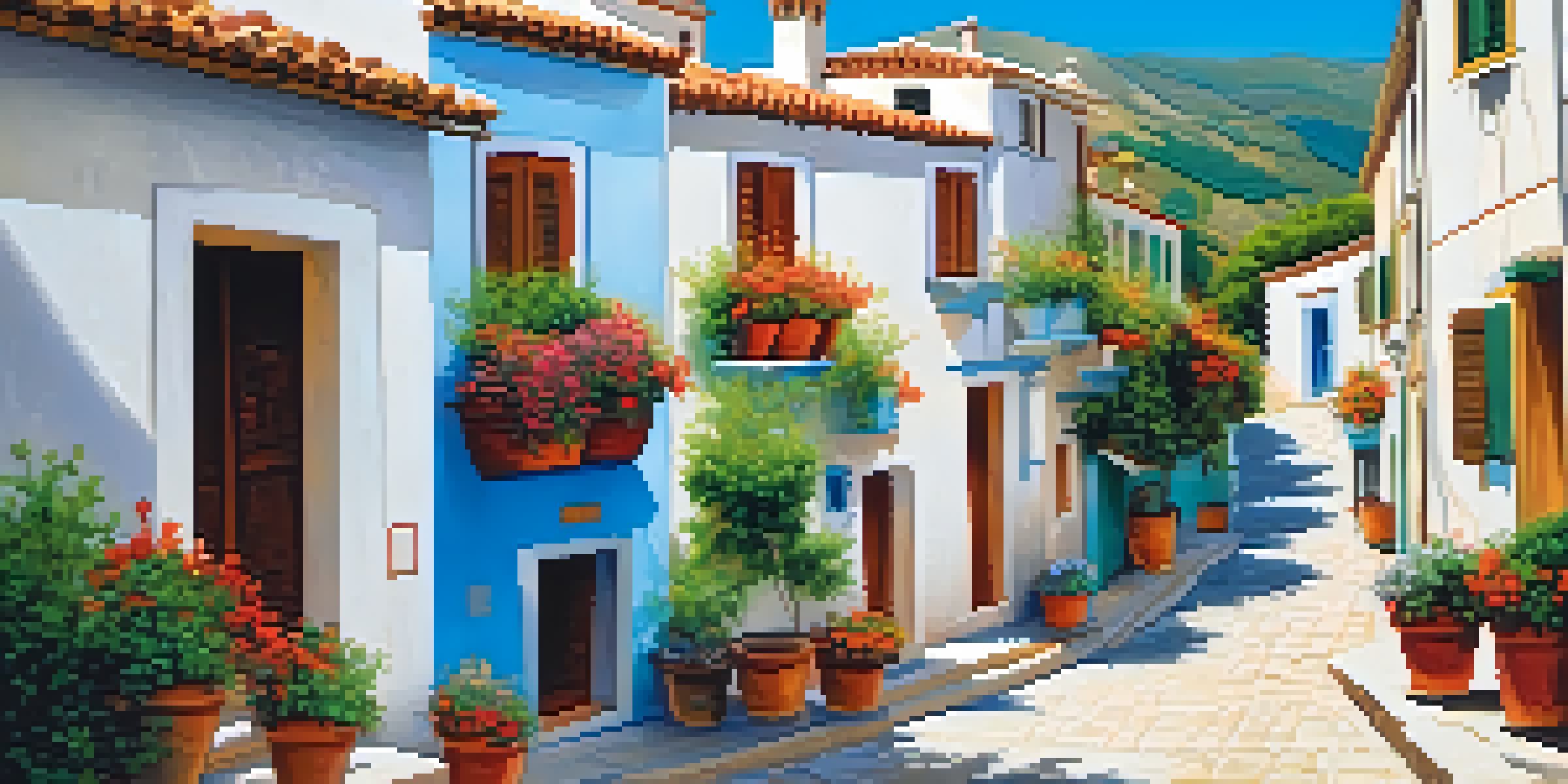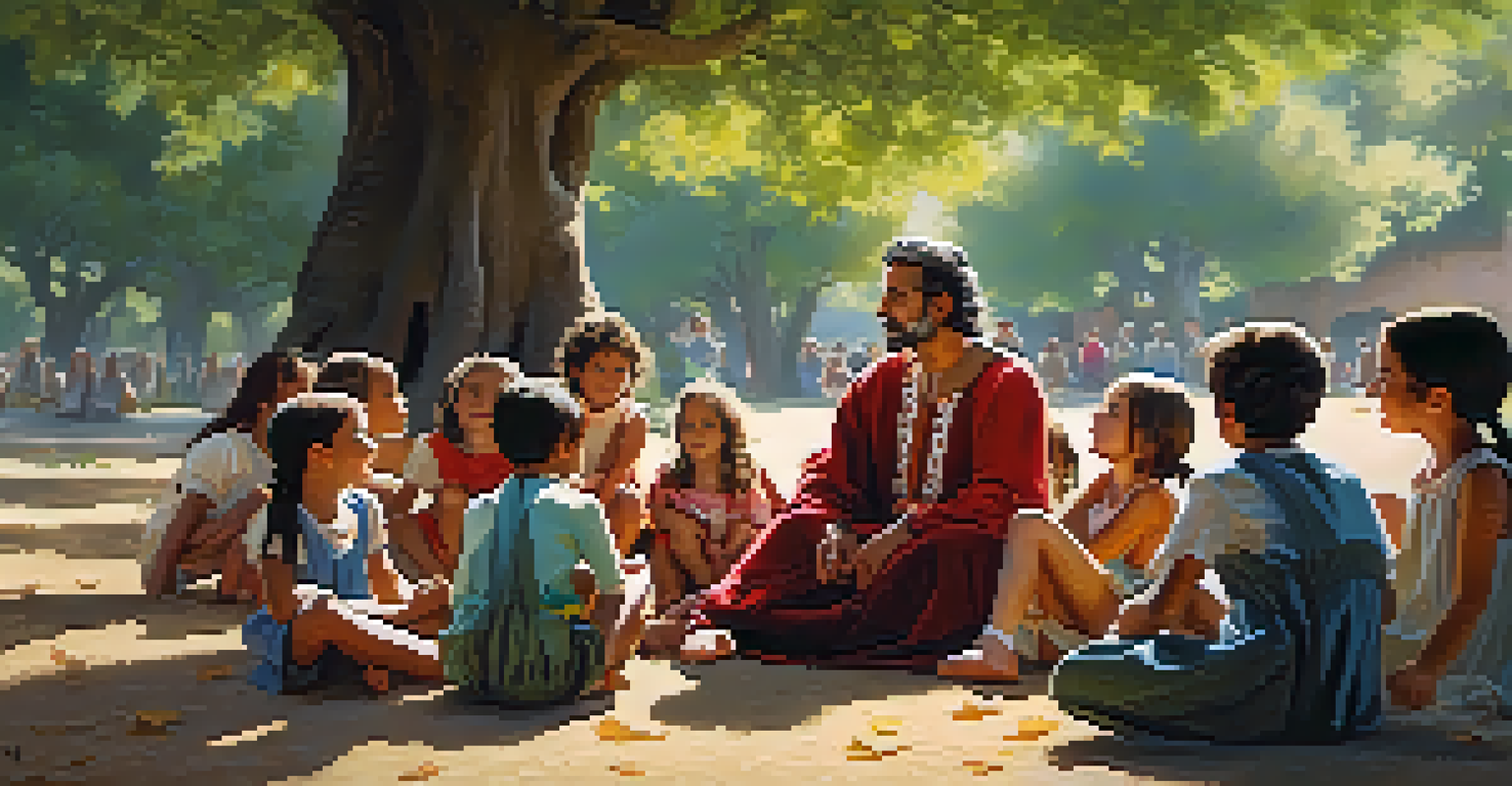The Impact of Historical Events on Spanish Storytelling

The Role of Historical Context in Spanish Literature
Historically, Spain has been a melting pot of cultures, which has significantly influenced its storytelling traditions. From the Moorish conquests to the Catholic Reconquista, these events have provided rich narratives that authors have drawn upon. This intertwining of cultures is evident in works like 'Don Quixote' by Miguel de Cervantes, which reflects both the chivalric ideals and the societal changes of the time.
The past is never dead. It's not even past.
Moreover, the Spanish Civil War serves as another poignant backdrop for storytelling. Writers such as Federico García Lorca and George Orwell captured the turmoil and struggles of that period, embedding deep emotional narratives into their works. These historical events not only shaped the characters and plots but also the very identity of Spanish literature.
Ultimately, the historical context acts as a lens through which stories are told, providing depth and resonance. By understanding the events that influenced these narratives, readers can appreciate the layers of meaning embedded within Spanish storytelling.
Influence of Regional Histories on Narrative Styles
Spain's diverse regions boast their own unique histories, which directly influence local storytelling styles. For instance, the Basque Country has a rich tradition of oral storytelling that reflects its unique cultural identity and historical struggles. This regional flavor adds a distinct voice to the narratives that emerge from these areas.

Similarly, in Catalonia, the history of independence movements shapes narratives that often explore themes of identity and resistance. Writers like Mercè Rodoreda use historical context to infuse their stories with local color, making them resonate with readers who share those experiences.
Historical Context Shapes Spanish Lit
The rich tapestry of Spain's history, from the Moorish conquests to the Civil War, deeply influences its literary narratives.
As a result, regional histories not only enrich the narratives but also foster a deeper connection between the story and its audience. This sense of place and identity is essential in understanding the broader tapestry of Spanish storytelling.
The Golden Age and Its Lasting Legacy
The Spanish Golden Age, spanning the 16th and 17th centuries, marked a pivotal moment in the evolution of storytelling. This era produced timeless works and set a standard for literary excellence, with influential figures like Cervantes and Lope de Vega leading the charge. Their works encapsulated the complexities of Spanish society, blending humor, tragedy, and social critique.
Stories are a communal currency of humanity.
During this time, the narrative structure also evolved, introducing new genres such as the picaresque novel. This genre, exemplified by 'Lazarillo de Tormes,' used wit and satire to comment on social issues, demonstrating how storytelling can reflect historical realities. Such innovations laid the groundwork for future generations of writers.
The legacy of the Golden Age continues to influence contemporary Spanish literature, as modern authors draw inspiration from its themes and styles. By studying this period, we can see how historical events shaped the narrative landscape of Spain.
The Impact of War on Storytelling Traditions
War has been a significant catalyst for storytelling in Spain, with conflicts often serving as the backdrop for poignant narratives. The Spanish Civil War, in particular, left an indelible mark on the literary scene, spawning works that explore themes of loss, resilience, and the human condition. Authors like Manuel Rivas have used their stories to process the trauma of war, creating powerful narratives that resonate with readers.
Beyond the Civil War, the impact of World War II on Spanish literature is also noteworthy. Many Spanish writers, such as Ramón J. Sender, found themselves in exile, crafting stories that conveyed their experiences and the socio-political climate of the time. These narratives often highlight the universal themes of displacement and longing, making them relatable across cultures.
Regional Histories Influence Narratives
Distinct regional histories in Spain foster unique storytelling styles that connect deeply with local audiences.
Ultimately, the influence of war on storytelling extends beyond mere historical documentation; it shapes the emotional landscape of narratives, allowing readers to connect with the past in meaningful ways. The stories that emerge from these tumultuous times often reflect the resilience of the human spirit.
Folklore and Its Historical Roots in Spanish Storytelling
Spanish folklore is deeply intertwined with the country’s history, serving as a reservoir of cultural identity and tradition. Tales of legendary figures such as El Cid and the various folk myths from different regions reveal the values and beliefs of the time. These stories often emphasize heroism, moral lessons, and the struggles of the common people, reflecting historical realities.
Folklore also plays a crucial role in preserving oral traditions, allowing stories to be passed down through generations. The act of storytelling becomes a communal experience, reinforcing social bonds and shared histories. For instance, the tradition of storytelling during festivals showcases how history and culture are celebrated through narrative.
As modern authors draw on these rich folkloric traditions, they bring historical context to life in engaging ways. This connection between folklore and history illustrates how storytelling evolves while remaining rooted in its cultural heritage.
Modern Influences: Globalization and Spanish Storytelling
In today’s interconnected world, globalization has introduced new influences into Spanish storytelling. This has led to a blending of styles, genres, and themes, creating a vibrant literary landscape that reflects contemporary experiences. Authors like Javier Marías and Rosa Montero incorporate global perspectives while still celebrating their Spanish roots.
The rise of digital media has also transformed storytelling, allowing for innovative formats that reach wider audiences. Social media platforms are now used to share stories, making them more accessible and engaging. This shift encourages collaboration and the exchange of ideas, enriching the narrative experience for both writers and readers.
Cultural Identity Drives Storytelling
Cultural identity and diverse traditions in Spain play a pivotal role in shaping narratives that reflect the nation's complexities.
Despite these modern influences, the historical foundations of Spanish storytelling remain vital. By weaving in elements from the past, contemporary writers can create narratives that resonate with both local and global audiences, ensuring the continued evolution of Spanish literature.
Cultural Identity and Storytelling in Spain
Cultural identity is a cornerstone of Spanish storytelling, deeply intertwined with the nation’s historical events. The diverse languages and traditions across Spain contribute to a rich tapestry of narratives that reflect the multifaceted nature of Spanish society. Writers often explore themes of identity, belonging, and cultural heritage, inviting readers to engage with their stories on a personal level.
For instance, the use of regional dialects and specific cultural references in literature underscores the importance of place and identity. This approach not only enriches the narrative but also fosters a sense of pride and recognition among readers from those regions. Authors like Ana María Matute have skillfully woven these elements into their stories, celebrating Spain's diversity.

As cultural identity continues to evolve, so too does the storytelling landscape. Contemporary writers are increasingly addressing global issues while remaining rooted in their Spanish heritage, creating a dynamic interplay between the past and the present. This evolution highlights the enduring power of storytelling to reflect and shape cultural identity.